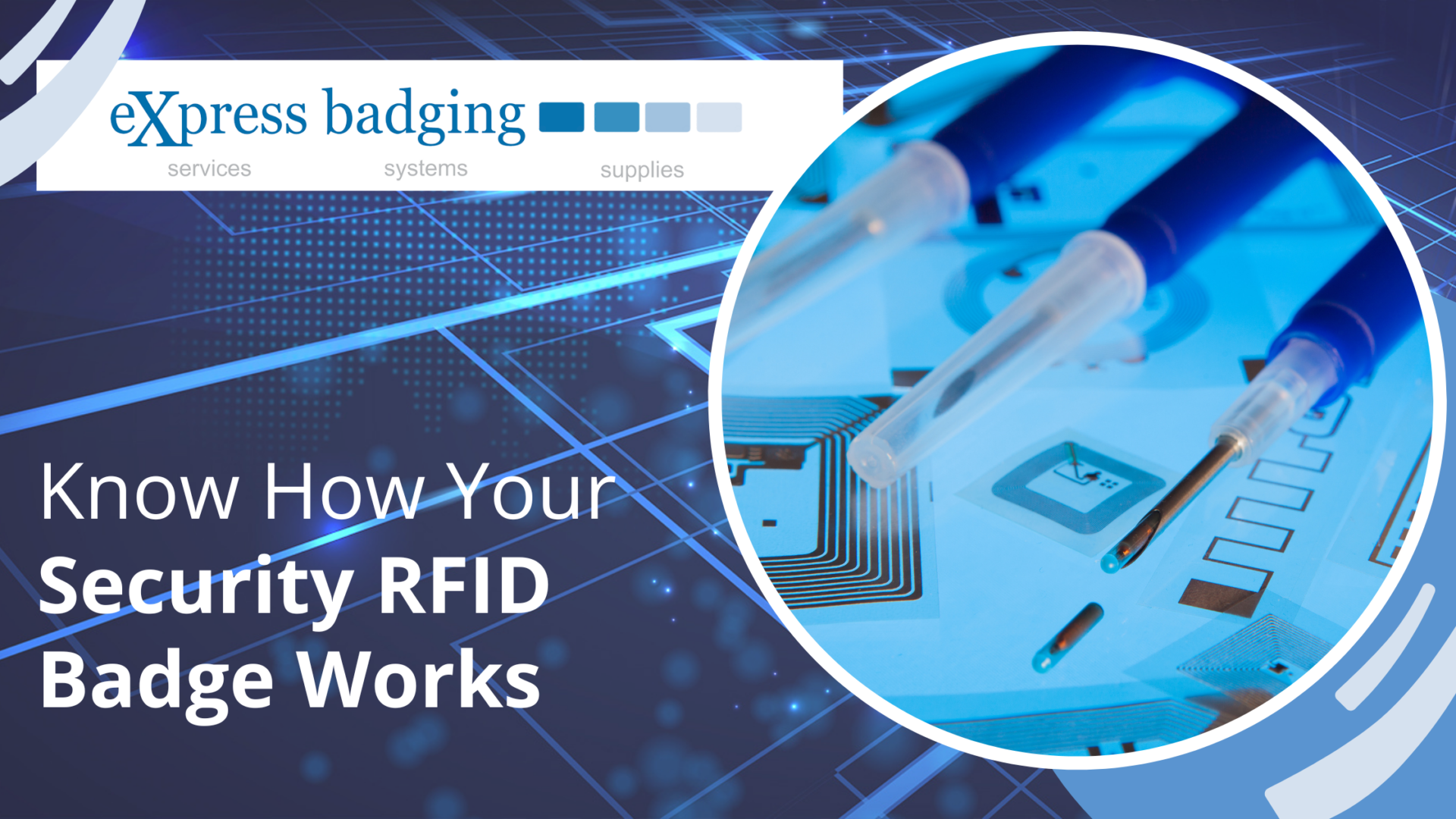This article will help you understand the basics of how radio frequency identification technology works; specifically in reference to your employee or student photo ID badge.
Let’s begin by defining RFID: “Radio-frequency identification (RFID) is a technology that uses communication via radio waves to exchange data between a reader and an electronic tag or card attached to an object or person, for the purpose of identification and tracking.”
Over the last two decades, RFID has become the preferred ID badge technology for various types of data collection systems (door access, time clocks, point of sale, and computer sign-on). Other than the non-standard insertion smart cards, contactless RFID offers the highest level of security granted by an ID badge and is not easily duplicated. RFID card readers last longer than those using magnetic stripe or barcode technology since they do not have exposed read heads or moving parts.
The original “Proximity” RFID cards are considered to be read only. Their unique ID is programmed by the manufacturer or card supplier and cannot be altered by the issuing organization. There are several secure formats they can be programmed in. Some are more secure than others; however, their increased security also makes them proprietary to single systems. However, proximity RFID does have a non-proprietary standard format that is integrated in most data collection systems. If you are using the open standard format, you can then expand its use in other types of data collection systems.
Proximity RFID is now considered a legacy technology for those implementing brand new systems. Other than using a proprietary RFID format, their biggest weakness is they cannot store other information than their hard coded unique ID. For many, read-write capabilities are just not needed. If your current data collection system is using proximity RFID, go ahead and maximize your investment and use it until the end of life; as it may never need replacing.
“Contactless” RFID cards have integrated the read/write functionality of the surface contact smart chip into an embedded RFID chip providing increased security and functionality. You can store a biometric template directly on the RFID card to decrease authentication time and increase security of information. You can record a unique user ID number (employee, student, membership…) on the RFID secured by encryption. A contactless RFID card can be programmed with tokens, coupons, or even monetary value for use in retail and tracking. This has spurred a new trend on college and university campuses as an increased number of them are adopting contactless RFID cards for use in their campus point of sale, attendance, and door access systems. Our Federal Government has deployed a Common Access Card (CAC) program to all federal employees and contractors. The CAC integrates both contactless RFID and contact smartcard technology that is mandated by strict government programs like FIPS 201 and HSPD12. Many consumers carry branded credit cards that use contactless RFID; however, merchants are still rolling out contactless RFID enabled terminals to meet this new deployment of card technology.
Contactless RFID’s perceived weakness is RFID itself. A new brand of theft has been introduced called RFID skimming. This has created a demand for new skim-proof sleeves and ID badge holders. However, if the data collection read is deemed so secure that RFID skimming needs to be addressed, use an additional PIN and/or biometric reader. Skimming problem solved! If to date your security risk tolerance has been satisfied by using magnetic stripes, barcodes and/or proximity RFID technologies, contactless is the most secure option you have to choose from.
Overall RFID is a proven and secure identification technology with many benefits. RFID technology should be strongly considered for use in every data collection system that is authenticated by a common photo ID badge, ID card, token or FOB.
RFID has not stopped evolving with just contactless read/write functionality. Ultra High Frequency (UHF) and Super High Frequency (SHF) technologies have recently made their way on to the RFID scene. They allow an ID badge to be read at extended distances. NFC or “near field communication” has integrated RFID into many smart phone devices already, and will be making their way to a door and time clock reader near you soon.
RFID card technology does have industry standards; however, interoperability between manufacturers is the Achilles heel. When selecting badge technology for your organization, confirm the RFID format can be used with other systems. RFID badge technology loses value if it only opens a door, only creates a time punch, only logs you in, or only buys your favorite beverage. When it can do them all, you will have efficiency and security working for you.
One photo ID badge enabled with one shared badge technology, used in multiple systems is the ideal ID badge solution!
To learn more on how you can take full advantage of RFID and other related badge technologies and integrate them within your organization’s identity programs visit: www.eXpressbadging.com or call 800-909-8602. Securing your world one ID badge at a time!

